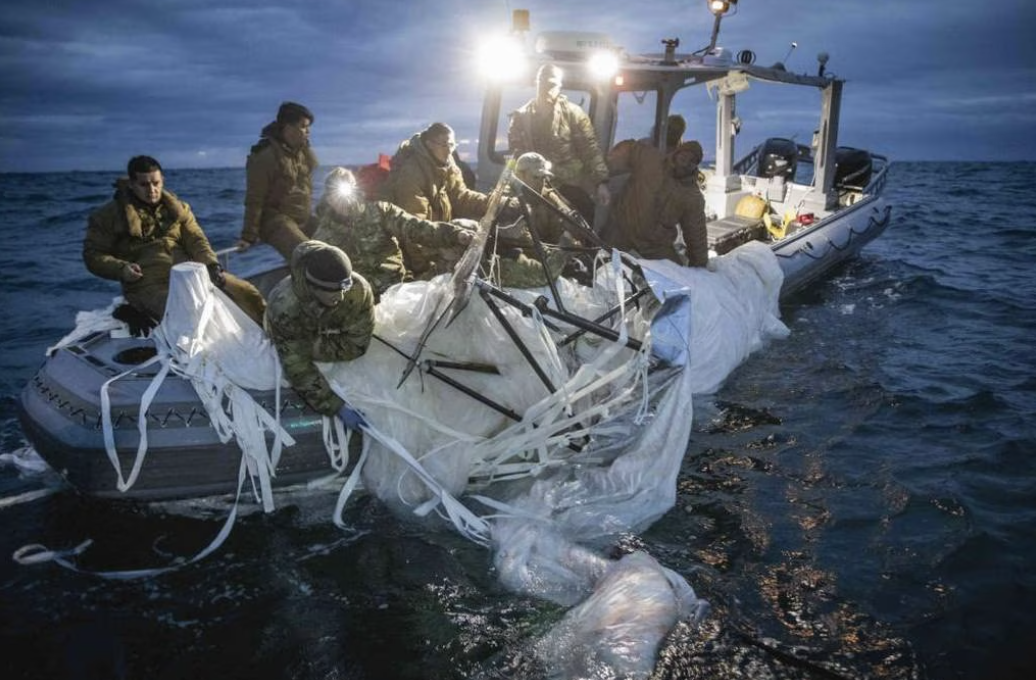
By Hannah Lee and Sonja Black
On February 2, the Department of Defense announced that it was tracking an unidentified flying object that it believed was sent from another country to spy on the United States. Since the identification of this first object, there have been three more similar unidentified objects that have been taken down by the US military.
The object that the Department of Defense located on February 2 was shot down by the US military on February 4 and later confirmed to be a balloon sent from China. China has also acknowledged that the balloon was sent from Beijing.
Secretary of State Antony Blinken had a trip planned to China to ensure amicable relations between the two economic superpowers. But as a result of the balloon floating into US airspace, the Biden Administration canceled the trip. Blinken, speaking with NPR, claimed that sending the balloon was a violation of international law and US sovereignty. On February 7, Secretary of Defense Lloyd J. Austin III submitted a request to speak to his Chinese counterpart but that request was rejected according to the Pentagon.
After the balloon was taken down over South Carolina and recovered by the FBI, it was found that it had the capability for intelligence surveillance. It was made up of antennae, propellers, and motors for it to be controlled from a distance. China claimed that the object was a research balloon that was blown off course. According to US intelligence, it is believed that the purpose of the balloon was to collect intelligence from military bases in Guam and Hawaii, but the wind carried it to other places. Tensions between the US and China have risen due to the balloon that entered US airspace. Major retail trade associations and their companies are considering diversifying their supply chain and manufacturing away from China, fearing fallout between the two countries.
China has claimed that the US has also sent surveillance balloons and that they have intercepted at least 10 in their airspace. The Biden administration has called these claims false. The US military has shot down three more unidentified objects over various parts of the US and Canada since the first balloon was shot down. On February 10, a US fighter jet shot down an object over Alaska. On the 12th, another object was shot down over northern Canada, and the following day, yet another object was shot down over Michigan. However, officials claim that they do not believe that these objects were sent by other countries to spy on the US.
Citizens have begun asking why there are so many objects being detected now. As a result of the shooting down of the first balloon on February 4, NORAD radar surveillance has become more sensitive in picking up unidentified objects. However, this is only one explanation for why so many objects have been detected recently. Another explanation is that China is putting out more surveillance devices in expectation of tensions rising over relations with Taiwan. Another possible explanation could be that the radar systems are not meant to detect these smaller slower-moving objects; it has been confirmed by the Office of the Director of National Intelligence that 144 objects went undetected between 2004 and 2021.
On February 18, Secretary of State Blinken, and China’s head diplomat Wang Yi, met in Munich, Germany during a security conference to discuss recent tensions between China and the US. Blinken warned that flying a surveillance balloon over US territory should not happen again. Wang Yi did not apologize for the balloon and criticized the US military’s decision in shooting down the civilian research balloon.
The strain between the two superpowers intensified this week as U.S. officials threatened to target Chinese players involved in potentially sending lethal aid to Russia for their war in Ukraine.
